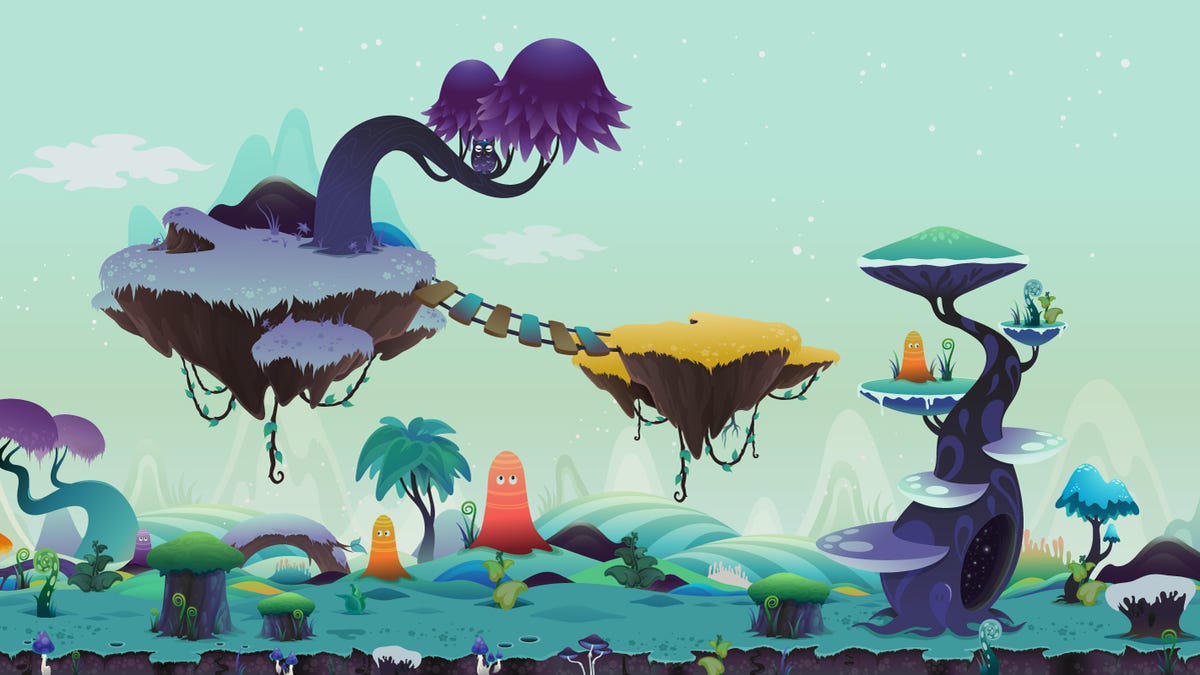The technology and platforms of Tiny Speck's Glitch
The game was designed so that any of the development team could push changes live almost immediately. It is Web-based but could soon have smartphone elements.

Last May, I began a series of
That game, which they announced on Tuesday is called Glitch, has been in the works since last March and much has changed about it in the interim--the artistic styles, the back story, the core game mechanic and the size of the
Glitch is a social online game that takes place in the imaginations of 11 ancient giants and tasks players with essentially growing an optimistic future from the ground up through complex questing, resource development, and interactions with others.
But one thing that hasn't changed is the Tiny Speck founders' determination that no matter what, they will be able to update and modify the contents of the live game--once it's live, that is--very quickly and not have to take it offline in order to do so, as is often the case with large-scale massively multiplayer online games like World of Warcraft.
On the official Glitch site, Butterfield and his partners, Cal Henderson, Eric Costello, and Serguei Mourachov, offer a brief peek at the technology behind that technological commitment.
"Glitch is built in an entirely new and different way for a game. The back end (java at the lowest level, with game logic scripted in Javascript)," they wrote, "is designed for maximum flexibility and ease of deployment. That means we'll be able to push new content--new items, new places, new characters--on a daily basis. It also means that we'll have lots of APIs with which the game can be expanded and extended."
This philosophy was crucial, Henderson told me then, "because we want to have hundreds of thousands of locations and items. So any of us working on it can update it."
How to do a map?
One of the challenges that had bedeviled the Tiny Speck team from the get-go was how to render a visually understandable map that would meaningfully represent the countless number of main streets and "child streets" in the game that would be necessary in order to ensure that everyone who wanted an in-game house could have one.
The idea had been to have a geometrically branching map, Butterfield said, "so that one main street can have six child streets time six sign posts, and each [of those] could have six child streets and six sign posts. So each main street [could have] thousands of child streets."
But Tiny Speck was struggling to find a way to make that idea work on a map. "Rendering that as a map that you can visually understand...gets incredibly hard," said Butterfield. "It's more or less impossible...It's hyper spatial [and] not a space that can really exist."
Eventually, Henderson suggested an innovative solution that the team decided to implement: instead of trying to map the entire thing, they would represent the grid as a small number of main streets with just four sign posts. And each sign would have essentially a drop-down menu of choices: A to G and 1 to 8. The idea was that then anyone would be able to find any location by simply picking coordinates, as they might on a normal map.
"We've been wrestling with it since we started," Butterfield told me in August.
"I just thought about how cities are organized," Henderson said of how he came upon the solution, "how you would address something in a city if you can't just say the name of the street."
Many platforms
At its core, Glitch is a 2D Web-based Flash game like many other social online titles. But Tiny Speck's business model depends on getting the game's players to branch out beyond their browser and onto other devices.
That's because while Glitch will be free to play for anyone, Tiny Speck plans to eventually sell a series of Glitch mini-games that will be available for iPhone and Android and allow players to unlock new skills that they wouldn't otherwise be able to access. That would, in theory, give those players a leg up over those who play only the free game on the Web.
Either as part of the same purchasable mini-games, or possibly as free add-ons, Tiny Speck hopes to give players the ability to use their mobile devices to send commands to their characters.
Perhaps, he explained, players would be able to command their "robots to tend to the crops from [their] iPhone...or participate in the [game] auctions."
Eventually, Butterfield said, Tiny Speck would like to make Glitch available, in some form or another, on as many platforms as possible, up to and including Xbox Live or PlayStation Network.

